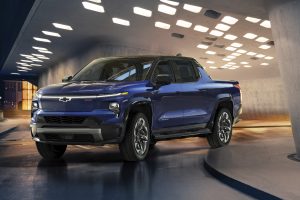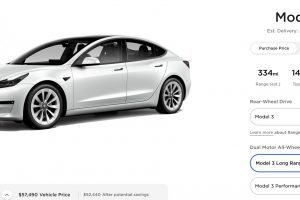Key Points
- 🚗 Tesla is implementing a driver drowsiness monitoring system using its cabin-facing camera to enhance road safety.
- 😴 Drowsy driving is a significant issue, with statistics showing accidents and fatalities related to this problem.
- 📸 Tesla will use the cabin-facing camera to monitor driver facial expressions and behavior to detect signs of drowsiness.
- 🚦 The drowsiness warning system activates when Autopilot is not engaged and the car is driven over 65 km/h for at least 10 minutes.
- 🌟 Tesla initially introduced the camera for safety and collision event recording, but it has evolved to detect driver features for improved safety.
Tesla is now starting to monitor drivers for drowsiness with its cabin-facing camera, hoping to prevent potential incidents of owners falling asleep behind the wheel.
One of the advantages of having robust driver monitoring systems in vehicles is so it can prevent things like distracted driving from happening. Driver drowsiness is also a major issue.
The National Highway Traffic Safety Adminsitration, or NHTSA, says that 684 people died in 2021 from accidents related to drivers falling asleep behind the wheel. Additionally, the agency said that “in 2017, 91,000 police-reported crashes involved drowsy drivers. These crashes led to an estimated 50,000 people injured and nearly 800 deaths.”
Tesla is doing its part to assist in the prevention of accidents caused by drowsy driving by activiating a new safety feature that will detect whether a driver is potentially in danger of falling asleep behind the wheel.
“The Driver Drowsiness Warning is designed to notify drivers who appear to be drowsy by monitoring driver facial characteristics as well as driving behavior to determine patterns indicative of drowsiness,” the company said in the Model 3 owners manual in the United Kingdom. “When driver drowsiness is detected, an alert is displayed on the touchscreen in the cards area and an alert is sounded.”
Tesla hacker @greentheonly also showed in mid-September that the company had already developed a driver drowsiness icon:
When the Driver Drowsiness Warning systems are enabled, they will be activated when Autopilot is not engaged and the car is driven over 65 km/h for a minimum of 10 minutes.
Tesla will use the cabin-facing camera to monitor facial expressions, helping to determine whether a driver is potentially falling asleep or appears to be drowsy behind the wheel.
The company first activated the camera in June 2020 to take images and short video just before a collision or safety event took place “to help engineers develop safety features and enhancements in the future,” it said.
By late 2020, Tesla had started to develop the camera to the point that it could detect certain facial features that would increase safety.




